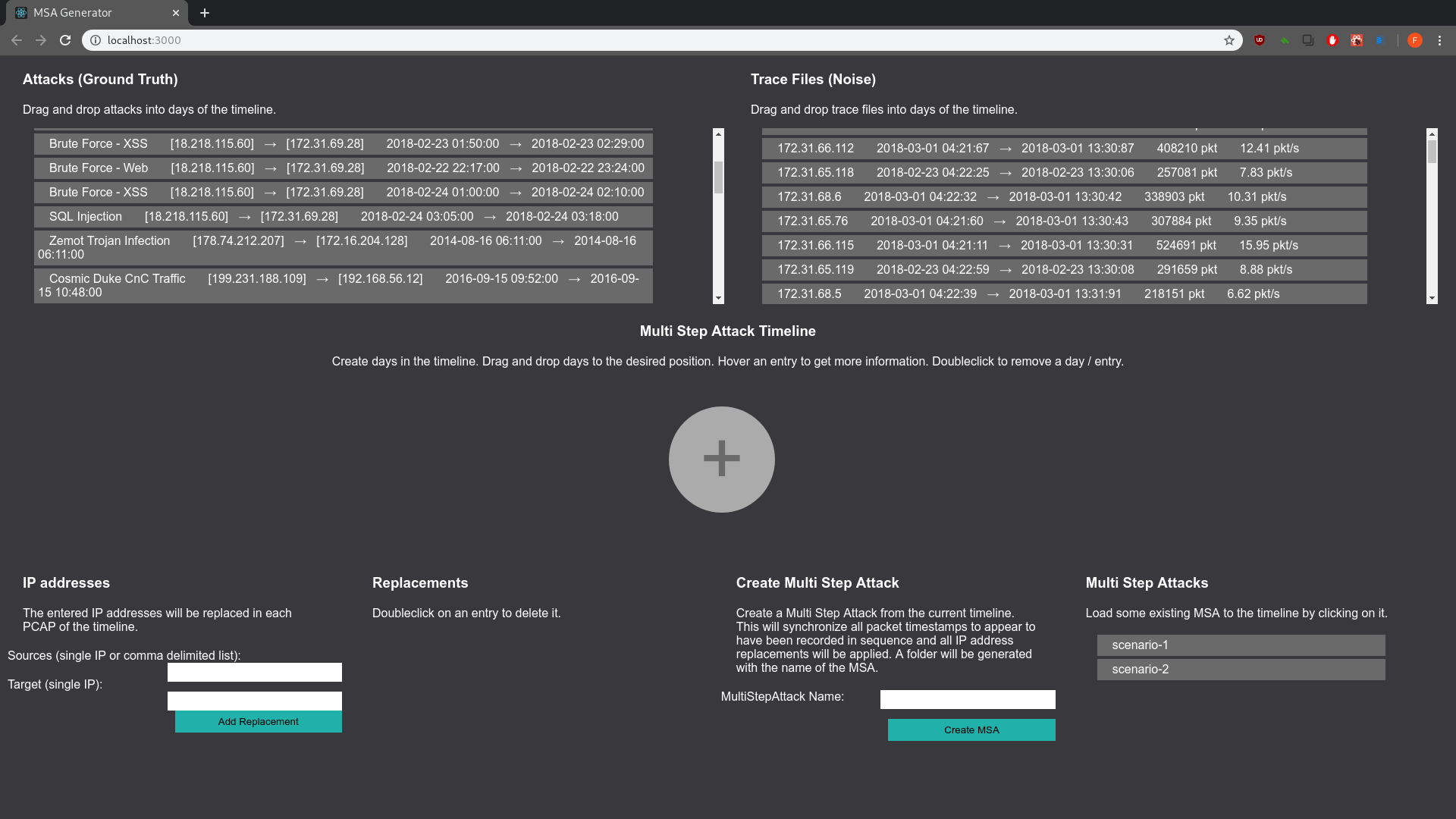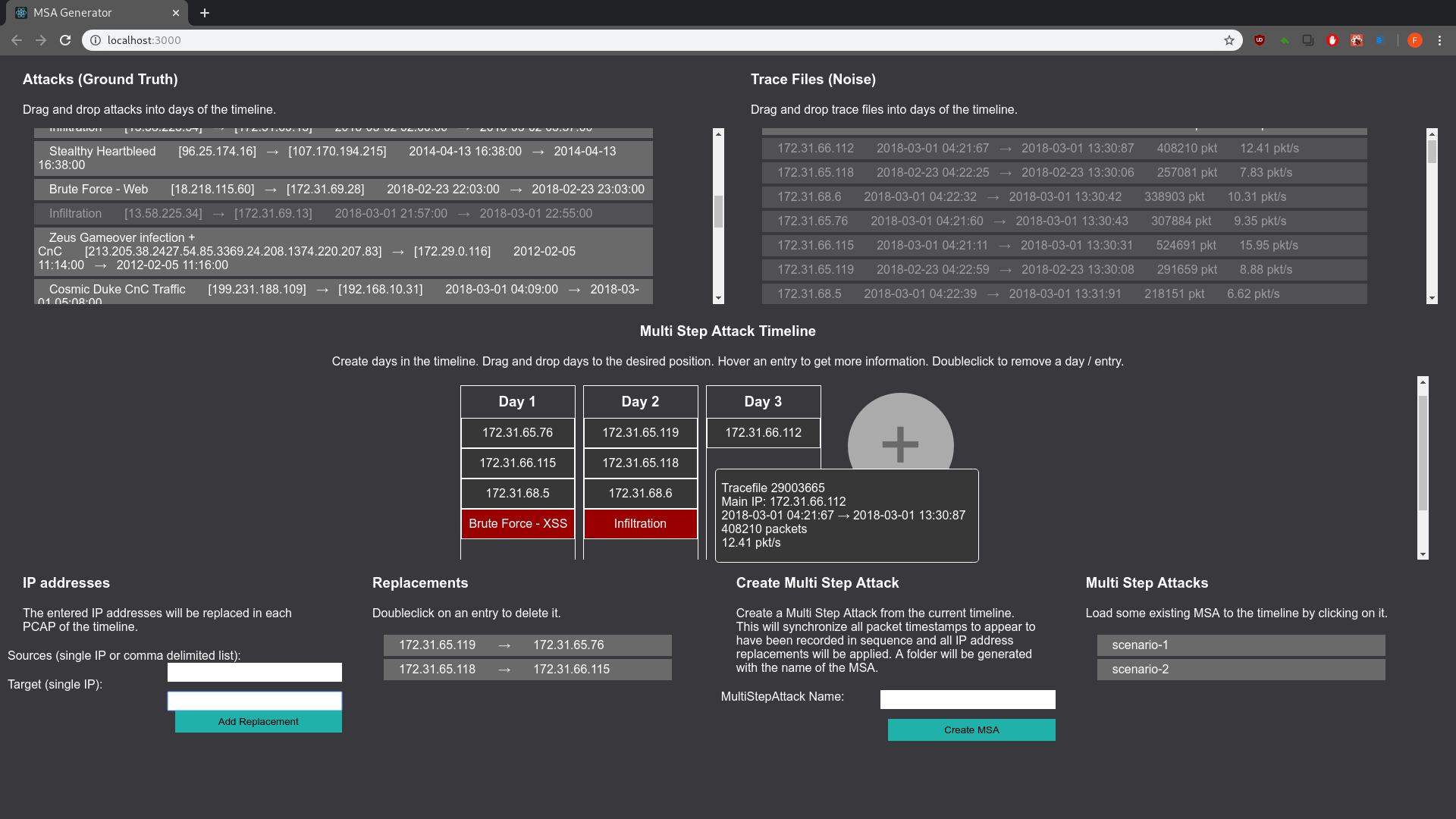- A highly experimental thing that I need for myself
- Untested code, potentially dangerous
YOU SHOULD NOT USE THIS UNLESS YOU KNOW WHAT YOU DO
You alone are responsible for using this tool, I do not take any responsibility for any kind of harm that it may cause.
- A go cli wrapper around existing tools that can analyze and modify pcaps. The tools are directly invoked as
cmd. They write stuff on your harddrive. Thats why you should not use this. - A react frontend for the browser to visualize what will happen with the pcaps.
The backend needs a config.json. This thing differentiates attack samples and benign traffic. Example below.
Btw, nice dataset for attack & benign traffic here: https://www.unb.ca/cic/datasets/ids-2018.html
{
"groundtruth": [
{
"files": [
"/home/you/pcaps/unbca/attacks/28-02-2018/capEC2AMAZ-O4EL3NG-172.31.69.24-part1",
"/home/you/pcaps/unbca/attacks/28-02-2018/capEC2AMAZ-O4EL3NG-172.31.69.24-part2"
],
"attacks": [
{
"attackers": [
"13.58.225.34"
],
"victims": [
"172.31.69.24"
],
"name": "Infiltration",
"start": "2018-02-28T10:50:00-04:00",
"end": "2018-02-28T12:05:00-04:00"
},
{
"attackers": [
"13.58.225.34"
],
"victims": [
"172.31.69.24"
],
"name": "Infiltration",
"start": "2018-02-28T13:42:00-04:00",
"end": "2018-02-28T14:40:00-04:00"
}
]
}
],
"unclassifiedTraffic": [
"/home/you/pcaps/unbca/benign/22-02-2018",
"/home/you/pcaps/unbca/benign/28-02-2018"
],
"outPath": "/home/you/pcap/apt-scenarios"
}
Install dependencies:
$ go get github.com/spf13/cobra
Install packages for your linux distro. The go wrapper calls them.
wireshark(needed:capinfos)tcpdump. in case you are on debian/ubuntu make sure that it can be used by your user. if you have app-armor in place and it blocks you, here is a guide https://gcplinux.com/tcpdump-permission-denied-running-as-root/tcpreplay(neededtcprewrite)
Init app
- add the
backendfolder to your go path - build your own
config.jsonfile like above - check the help menu
go run main.go
You must first run a deep analysis over the configured files. Export the analysis results to a state file:
$ go run main.go export -e your_state.json
Grab a coffee in case you have several hundred gigs of traffic (as I do) ...
Now take the analysed files and host a server
$ go run main.go server -s your_state.json
Navigate to the frontend folder and fire it up. you need a moderately new version of npm / yarn:
$ npm install
$ npm start
Go to your browser, localhost:3000. When you did the config right the browser content looks somewhat like this:
- create new days of an attack scenario by hitting the big
+ - move all the stuff per drag n drop (attacks, traffic samples, days in the timeline)
- drag benign and attack traffic to your liking
- hover stuff for more info
- double click stuff to delete it
- you can rewrite IP addresses with the form in the bottom left corner
- name the scenario you created (form in lower right corner)
When you create an attack scenario the following will happen on your computer:
- first timestamp is taken from first traffic sample in day 1
- all other pcaps get time-adjusted, that they apprear to have been recorded in order
- IP replacements are applied
- stuff is copied to a new folder in the
outPaththat is configured in theconfig.json
Depending on your traffic samples that may fill your harddrive. again, be careful where you run this. better dont. NEVER HOST THIS ON A PUBLIC SERVER. it gives away cmd.
- test this shit
- clean up, take out garbage
- I remember vaguely that I built in a silly assumption about filenames in the benign traffic folders. sigh. remove that.


